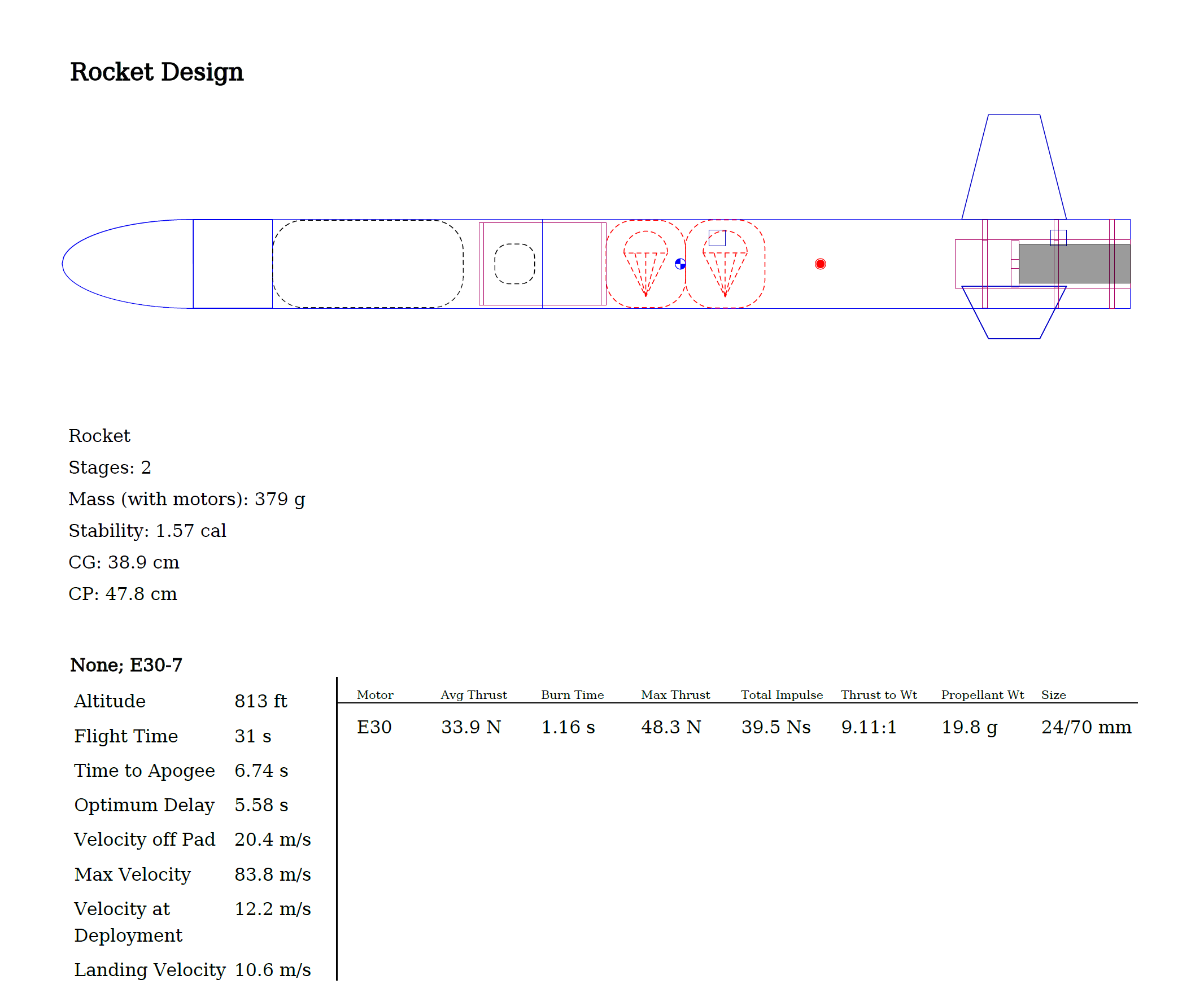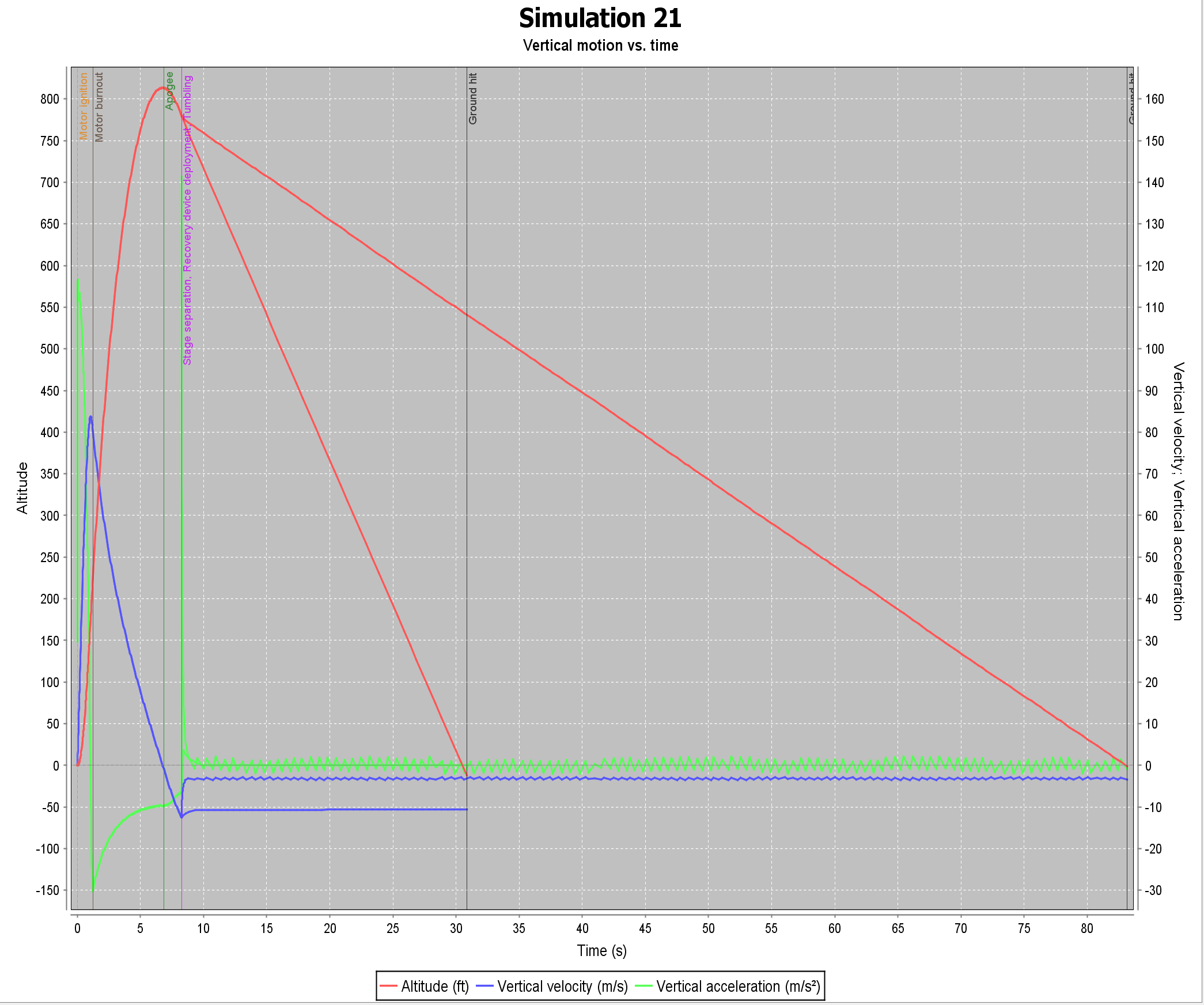Team America Rocketry Challenge Rocket: 2015-2016

At the start of junior year of high school, I worked with a team of 5 friends to design and construct a rocket for the national TARC competition. A semester later we placed 9th in the nation out of over five hundred teams.
The project got underway in our high school science classroom, meeting our outstanding mentor Ken Biba. Ken is an accomplished amateur rocketeer, and truly lead us on the path to success. Using his expertise, along with knowledge from classes and previous model rockets, we set out to create a rocket to carry an egg to 800 feet, and return it safely to the ground within a total flight time of 46-48 seconds.
An open source software called OpenRocket allowed us to simulate different design iterations, testing the effect of fins shape, weight, tube diameter, and parachute size on the flight of the rocket. For our first prototype, we concluded on trapezoid fins, which are optimal for sub-sonic flight, the narrowest tube diameter we could be the egg in to minimize drag, and a low weight to give us maximum options for rocket motor choice.
The rocket motor was also an important design aspect. You can purchase all types of hobby motors, adjsuting the diameter, total impulse (thrust), burn legnth, thurst profile, etc. A slow burning motor produces lower speeds, which minimizes drag and allows for an overall light rocket. However, going to slow can increase the rocket's susceptibiltiy to wind. Through trial and error, we decided to use a faster burning motor that was slightly more powerful than our target height needed. This gave margin for adjusting the rocket's mass (both total mass and center of mass) in different conditions. The immedifate large impulse also brought hte rocket of the pad at a high speed to minimized weatherocking, which is when the wind tilts the rocket's tragetory horizontally - leading to lower altitudes.


After CADing and laser cutting the fins and centering rings, we constructed the rocket over a few weekends. There were numerous details to consider, such as rounding the front edges of the fins, filleting any hard corners for support and drag reduction, and applying a smooth coat of paint. Luckily, this all came together for a successful first flight. In fact, the only change we made to the final design was decreasing the fins size to further reduce drag while still maintaining sufficient stabilization.
In our first year in the contest, we qualified for nationals with a best flight of 805 feet and 46.65 seconds, and ended up placing ninth overall at nationals. I guess rockets were cool, and our club expanded into two more teams the following year, with the original team serving as mentors to the new group of rockrteers. Although our final qualification flight ended with a perfect 850 ft alitutude (for a target of 850 feet that year), our parachute charge didn't ignite, leading to a quick and destructive end to our national hopes for that year. Nonetheless, we were able to cheer Redwood Rocketry on from the sidelines as one of our other teams qualified in their first year!